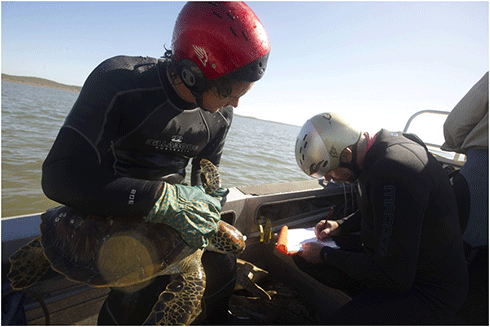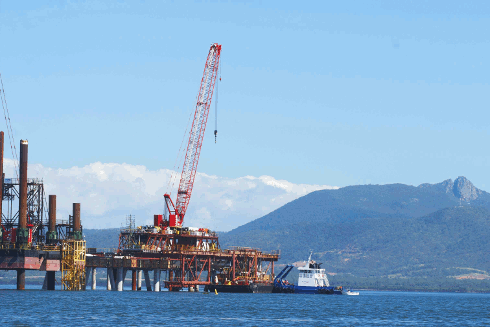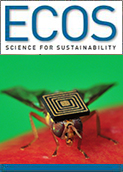
|
Published: 11 March 2014
Turtle tagging to help assess Gladstone dredging risks
Australian industry, environmentalists and fishing interests have been at loggerheads over the dredging of Gladstone Harbour. On the one hand, Gladstone and the state of Queensland seek economic prosperity from growing investment in regional resources extraction, processing and shipping. On the other, the World Heritage-listed Great Barrier Reef lies at Gladstone Port’s doorstep.

|
|
Marine scientists tagging turtles at Gladstone Harbour. Credit: CSIRO
|
Gladstone already boasts Queensland’s largest multi-commodity port, shipping out 50 million tonnes of coal each year, as well as exports such as aluminium and cement products. More than 1200 ships pass through the port each year, and investment in Queensland’s coal seam gas industry will only see this traffic increase.
To accommodate the expansion, up to 26 million cubic metres of sediment is flagged for removal from the sea floor to widen and deepen shipping berths and channels.
In September 2013, dredging was completed, with removal of around 21 million cubic metres of sediment. The remaining 5 million cubic metres may need to be dredged in future.
However, during the dredging, community-voiced environmental concerns also piled up, with reports of dead and sick marine life being linked with the increased turbidity.
While Gladstone has been a major shipping port for close to half a century, Dr Russ Babcock, a marine ecologist from CSIRO, says little is known about the harbour’s pre-industrial ecology.
‘In the 1960s, the scientific knowledge required prior to developing Gladstone Harbour was different compared to what is required now,’ he says.
What is clear is that the marine environment of Gladstone Harbour is significant for its beds of seagrass that feed grazing wildlife such as dugong and sea turtles. An increase in sedimentation of water raises turbidity, potentially reducing the amount of sunlight that reaches the seagrass beds.
‘Tens of thousands of hectares of seagrass meadows are estimated to have been lost around the world due to dredging,’ says Dr Babcock. ‘Individual instances of seagrass loss may be relatively small in scale but collectively such impacts can lead to major seagrass loss.’
At the moment, there is a need to better understand how long sediment takes to resettle on the seafloor, where it will be deposited, or how soon it will be flushed from the harbour. To help decision-makers improve their management of the harbour’s natural environment, Dr Babcock‘s team of marine researchers are trying to better understand the movement of sediment through the water column. This will help improve predictions of how dredging impacts seagrasses and, in turn, the marine life dependent on them.
Tracking the movements of seagrass-feeding aquatic animals such as sea turtles could also provide insights into dredging impacts and the way the animals interact with the port’s shipping traffic.
‘As well as identifying the overall effects of dredging on seagrass in Gladstone Harbour, we need to know which parts of the harbour have been most affected, and how that interacts with the turtles’ use of the harbour,’ says Dr Babcock.
‘By studying the movements of these turtles, we’ll be able to identify feeding areas and transit paths that turtles use to get from one part of the harbour to the next.
‘The more we know about the parts of the harbour the turtles use, the better we’ll understand how future development in the harbour can be managed to minimise any harmful effects.’

|
|
LNG development works at Curtis Island off Gladstone, looking towards the mainland. Credit: CSIRO
|
Clues as to how the consequences of dredging might be best mitigated are emerging from other parts of Australia. Dr Babcock says port authorities elsewhere have taken measures such as restricting dredging operations to times of the year when organisms are less sensitive to sediment coverage. The aim is to try and ensure that ecosystems can recover from each dredging event.
The marine research program being undertaken by CSIRO was initiated through GISERA (Gas Industry Social & Environmental Alliance), an alliance co-funded by CSIRO and Australia Pacific LNG. The alliance focuses research on the environmental and socio-economic impacts of Queensland’s growing coal-seam gas industry.
Partnerships between research and industry such as GISERA are unlikely to provide perfect harmony between our society’s diverse values in ecology, energy and economics. Yet the research produced by this alliance will at least provide some clarity on the murky intersection of growing industry and our fragile coastal environment. Initial results from the marine research program will be available later this year.



